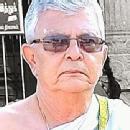The Ultimate authority for The Hindus is the Vedas.Those who follow the Vedas are Astikas, meaning “It is” Those who deny it are ‘Nastikas, “Deniers’ Now the terms Astika and Nastika are used to denote Faith in God,Refuting God respectively . This is incorrect. The Vedas are not written nor were they originated from some one. It is believed to be The Breath, both Inhaling and Exhaling of the Creator, Brahma>( Usvaasa and Visvaasa) These , in turn were reported to have been revealed to Brahma in a flash when He did penance , contemplating Lord Narayana from whose Navel Brahma evolved Vedas are sounds. Brahma converted them into language with the help of his consort Goddess Sarasvati. These sounds are intuitively grabbed by the Seers later from the Ether. As such the Vedas were not authored. So they are called ‘Anaadi’ beginning-less. The Vedas are four in Number. Rig,Yajur, (has Shukla or White Yajur;Krishna Yajur, Black Yajur) Sama, and Atharva. Each Veda has four parts. They are called , Samhitas, Brahmanas, Aranyakas, and Upanishads, Thus we have, Rig Samhita, Brahmana, Aranyakas and Upanishads. Similarly for the other three Vedas. The Brahmanas are prose texts that discuss, in technical fashion, the solemn sacrificial rituals as well as comment on their meaning and many connected themes. The Aranyakas, “wilderness texts” or “forest treaties”, were composed by people who meditated in the woods as recluses and are the third part of the Vedas. The texts contain discussions and interpretations of dangerous rituals (to be studied outside the settlement) and various sorts of additional materials. It is frequently read in secondary literature. Upanishads are those that delve deep into the origin of every thing and description of Reality that lies beneath the world of Names and Forms. Detailed introduction to Vedas and the essential concepts of Upanishads. They are explained from the Advaita, Dwaita and Visishtadvaitha point of view and modern scientific interpretation of these thoughts.




